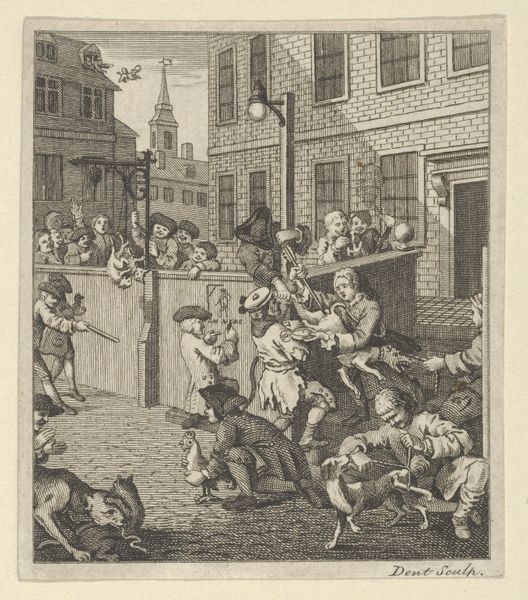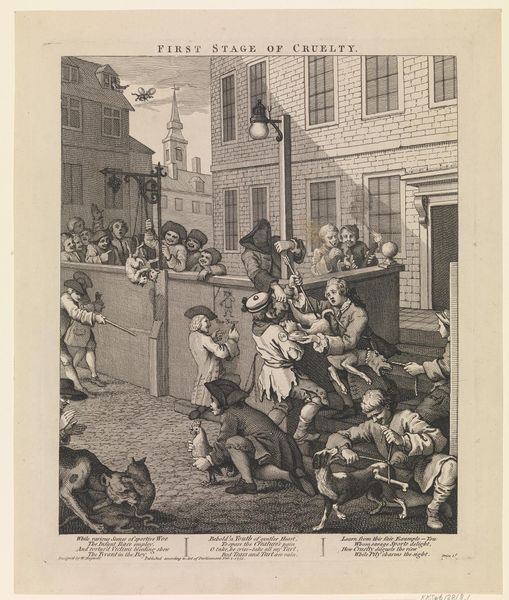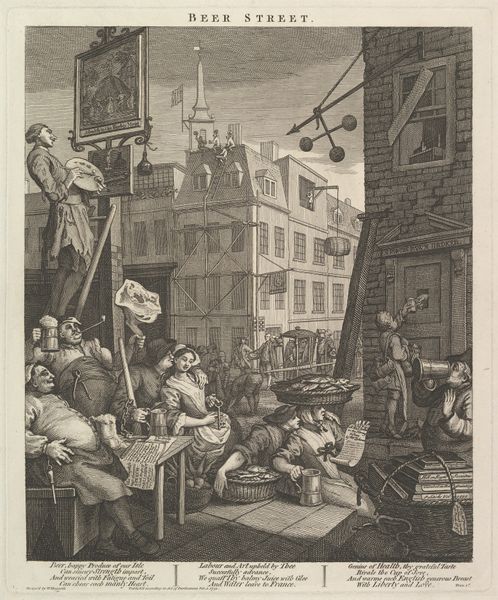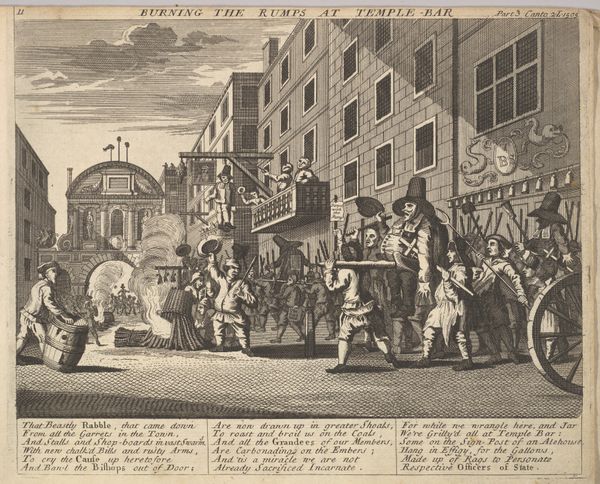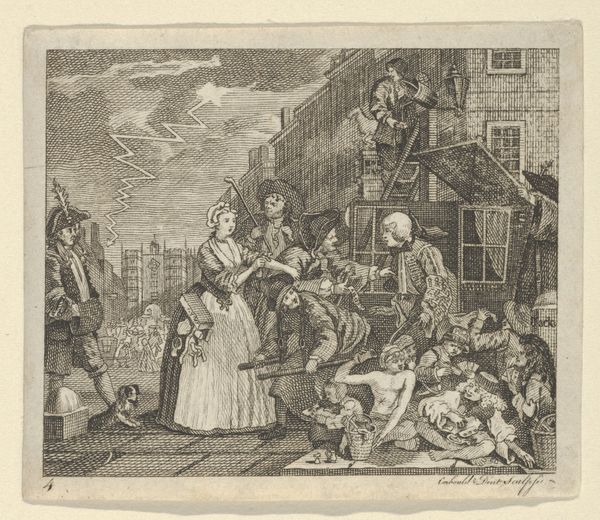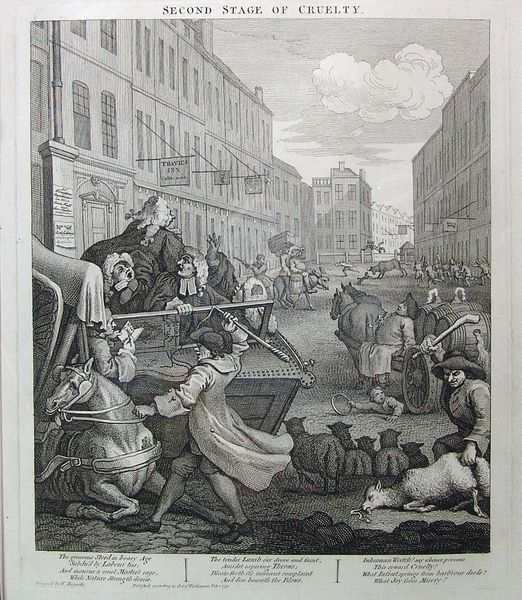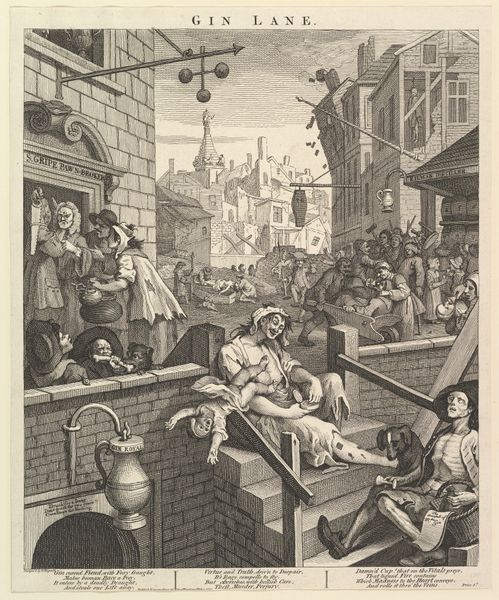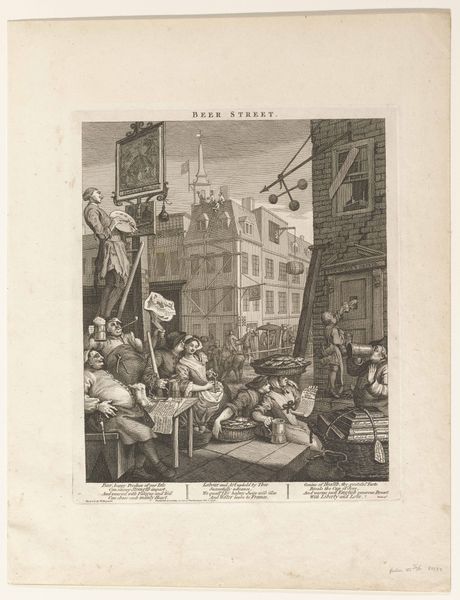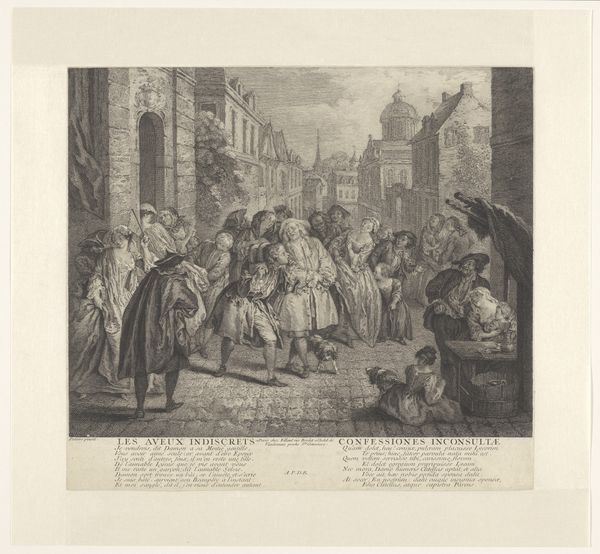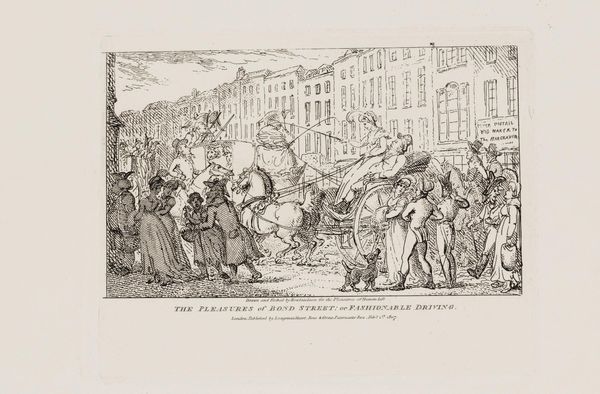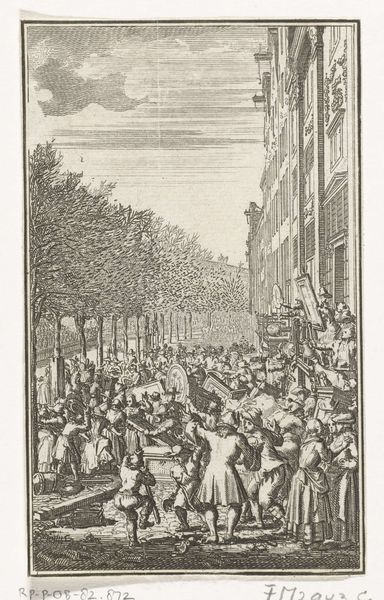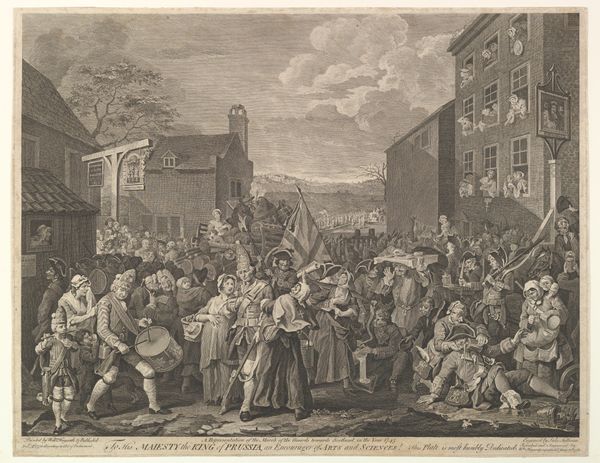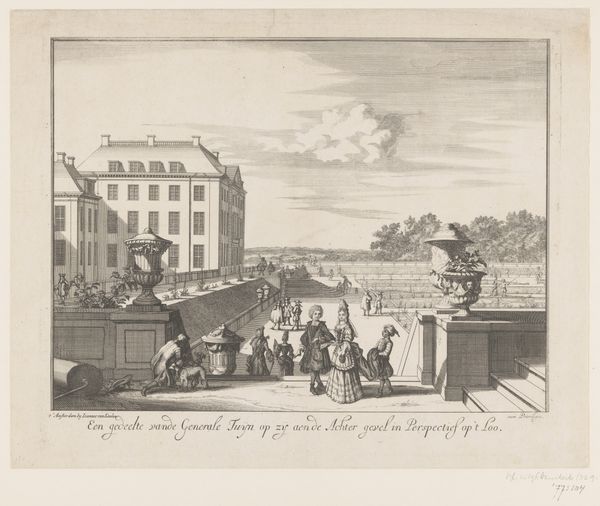
The Second Stage of Cruelty (The Four Stages of Cruelty) 1751
0:00
0:00
drawing, print, etching, engraving
#
drawing
#
narrative-art
# print
#
etching
#
figuration
#
horse
#
genre-painting
#
history-painting
#
engraving
Dimensions: sheet: 14 15/16 x 12 5/8 in. (37.9 x 32 cm)
Copyright: Public Domain
Editor: We're looking at "The Second Stage of Cruelty" by William Hogarth, made in 1751. It's an etching and engraving. It's incredibly detailed, almost overwhelming with all the things happening. How should we interpret the intense scene in this print? Curator: Look closely at the means of production here. Hogarth uses the relatively new technology of mass-produced prints to depict the realities of labour and social stratification. Consider the horse being beaten. Notice its “heavy age, subdu’d by labour.” Hogarth forces us to examine how these animals were used and consumed within the burgeoning London economy. What details do you observe about the laborers themselves? Editor: Well, many of them are being abused too! The boy whipping the horse is being whipped himself. It looks like everyone is taking their frustrations out on someone else. Does the "cruelty" in the title refer only to animal abuse? Curator: Hogarth highlights the cyclical nature of exploitation through his emphasis on material conditions. It extends beyond animals to encompass the lower classes, trapped in a system of brutal labour and unequal power dynamics. The print makes no separation between human suffering and animal exploitation. Note, even the "learned" judges nearby are participating in, and benefitting from, the very social conditions that permit such brutality. How do you see this interconnectedness visualized? Editor: That's a great point. It's visualized in how crammed together everyone is. Rich and poor alike, but of course some are more subject to cruelty. This print doesn't just depict a scene; it critiques an economic system through its visual language and material production. Curator: Precisely. By examining the etching process, the economic structures represented, and Hogarth’s intention for mass distribution, we unveil the layers of social commentary embedded in this powerful work. This gives us more food for thought about labor.
Comments
No comments
Be the first to comment and join the conversation on the ultimate creative platform.
